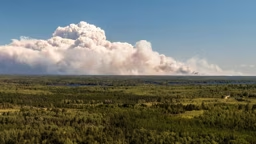At first, I didn’t think much about the increase. $85 for a cabin and 40 acres of woods in the coulees of the Minnesota River Valley – so what? But wait just a dang gone minute. Look at that percentage of increase. We’d made no improvements to the place. It had everything we didn’t need for our Thoreau-style weekends: no water, no power, no plumbing. And the woods were perfect just the way God made them.
As I thought about it more though, I realized we had made some improvements. My late wife, Pat, ever the artist, had painted white-half moons on the sides of the outhouse and farm animals on the door. And down the quarter-mile path through the woods, we’d hauled in a mattress, a two-burner Coleman camp stove and a large cable spool we used for a table.
I’d replaced the cabin’s plain front door with a solid oak one I’d salvaged from a Victorian house. It had a long-oval, beveled glass window in it. The juxtaposition of that Victorian door with the rustic cabin was wonderfully whimsical.
Had the tax assessor been out there? Had she noticed the improvements? Had she noticed the door? Was that what caused the tax increase? Did the county need my money to build a high school? Had a young Bernie Madoff been handling the county’s pension fund?
I called the tax assessor. “Why’d my taxes go up 63 percent?” I asked.
“Sir, you have more land this year,” she said.
Befuddled, I replied, “More land? Wow! That’s great. Will I get more next year? I thought they weren’t making it anymore.”
“I mean you have more useable land this year,” she said. “We did a fly-over of the county last year and reassessed certain parcels. You have more flat land than we thought. We reclassified a portion of your land from timber to agriculture.”
Then I understood. I wasn’t complaining though. I didn’t intend to clear the hardwood forest to grow corn and beans on the county’s newfound level land. To me, it was all gorgeous and useable land just the way it was. We hunted morel mushrooms there in the spring, had great outdoor parties around the stone fire ring, cut timber for firewood, grew ginseng, and most importantly – used the place for creative loafing, which was priceless.
Our first weekend at the cabin the following spring, we carried in water, groceries, ice for drinks, candles, a kerosene lantern and a new solar hot water bag for showers in case we didn’t want to take a dip in the chilly creek. Rocking back in her deck chair, Pat said smugly, “I wonder what the people in the city are doing now.”
“Probably their taxes,” I said.
Paul Sullivan has never met a cabin he didn’t like.











